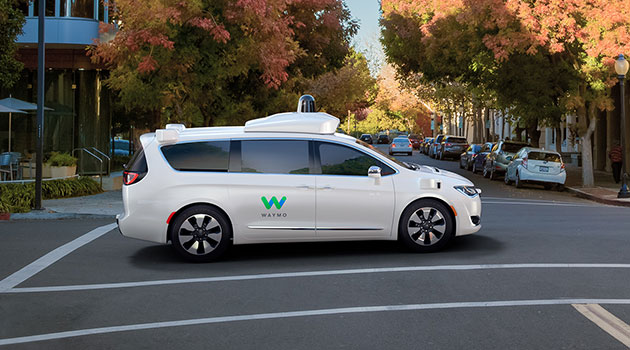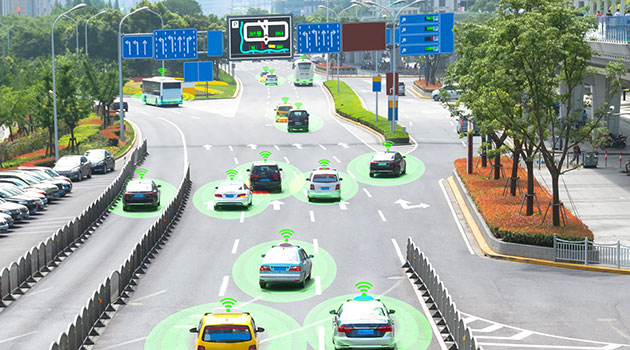If you hate making small talk with your rideshare driver, consider moving to California: driver-free vehicles may be permitted to pick up and drop off passengers in the Golden State as soon as next month.
The California Public Utilities Commission (CPUC), the regulatory board charged with overseeing transportation companies in the state, introduced a pilot program last week that should be voted on at its next meeting on May 10.
Should it pass, the plan would allow for rideshare services and other specially-permitted companies to dispatch autonomous taxis on the state’s streets, collecting information on the experimental transit in real time—with real people.
The idea marks the next natural step for California officials, whose decision to let driverless cars loose on their roads officially kicked off last week. But it comes at a precarious time for the industry in general, riding on the coattails of the deadliest month ever for autonomous cars, when two people perished at the invisible hands of the technology.
The high-profile accidents have already made a visible impact on national attitudes toward self-driving vehicles, with more people reporting feelings of distrust or fear toward the computerized cars in the wake of the incidents.
Still, with any hope of national regulations currently languishing in congressional limbo, California regulators are free to take whatever steps they deem necessary to move the technology forward. So what, exactly, do those steps entail?
Mapping New Territory
Autonomous car research is nothing new in California. The state is the birthplace of the technology, and experiments on it have taken place there, in some form, since 2012.
In its pilot program proposal, the CPUC utilizes much of what the state has already learned—and the regulatory infrastructure it’s already put in place—to facilitate the growth of the self-driving industry.
Operators hoping to dispatch driverless rides must already hold a permit for testing autonomous vehicles, and must continue adhering to all rules attached to that license, including filing reports with the state Department of Motor Vehicles on any incidents the cars are involved in.
Operators hoping to dispatch driverless rides in California must already hold a permit for testing autonomous vehicles.
To obtain the additional driverless taxi testing permit, a company’s experimental cars must have been on the road for at least 90 days, and the company must promise not to send the vehicles to airports; refrain from picking up multiple fare-splitting groups; ensure all passengers are 18 or older; and attain written permission from anyone taking the ride.
The last stipulation may prove the trickiest for autonomous taxi providers, with no one behind the wheel to tell passengers—who will not know ahead of time that they’ve summoned a driverless ride—what, exactly, is going on, and ensure they’re well informed before signing on any dotted line. Still, whatever communication does transpire between riders and any remote operators of the vehicles must be reported to the CPUC within 24 hours. The proposal makes no mention of how that communication would be recorded, whether any other conversations taking place in the vehicle would or could be captured, or whether any other data on the passengers involved would or could be collected. It does, however, stipulate that two separate reports on communiques between riders and remote operators should be provided: one public and one “confidential.”
Navigating Old Fears
The open-ended requirements would likely be enough to trigger fear in a paranoid mind, but they’re far from the most worrying aspect in the collective mind of the public about the encroaching technology.
Poll after poll has found more Americans rejecting the idea of self-driving cars, reporting general distrust or outright fear of the autonomous autos and saying that they would not like to ride in one.
And while many pollsters reported a possible reversal of that trend with a tepid embrace of the technology seen earlier this year, any such progress toward self-driving acceptance has since been obliterated by last month’s spate of deadly accidents. (An Arizona woman was run over by a self-driving vehicle that failed to detect her crossing the street, while a California man in an autonomous car was driven straight into a concrete median.)
In California specifically, a recent survey showed 58% of respondents did not endorse having self-piloted vehicles on their roads, with just 23% in favor of seeing the cars in their neighborhoods. (Only 28% said they’d feel safe taking an autonomous ride, while 57% said they would not.)
The respondents are uniquely qualified to take on such questions: California is currently home to more self-driving vehicles than anywhere else in the country, outside of Arizona. Still, to ease the fears of its citizens, the Golden State may want to look to its easterly neighbor’s example.
Forging Ahead

Phoenix residents have been using a driverless taxi service for nearly six months, after Google’s self-driving car division, Waymo, launched a similar pilot program there last year.
Waymo’s driverless Chrysler Pacificas have been involved in at least 20 crashes, according to Arizona officials, though numbers are difficult to track as the state doesn’t require reports to be filed on autonomous incidents.
Still, Waymo has since racked up hundreds of thousands of driver-free miles and recently received the blessing of the state to begin charging passengers for the pleasure of a driverless ride. The initiative is expected to launch later this year. With both Arizona and California actively backing these headless horsemen, we may be entering a new age of the Wild West.
